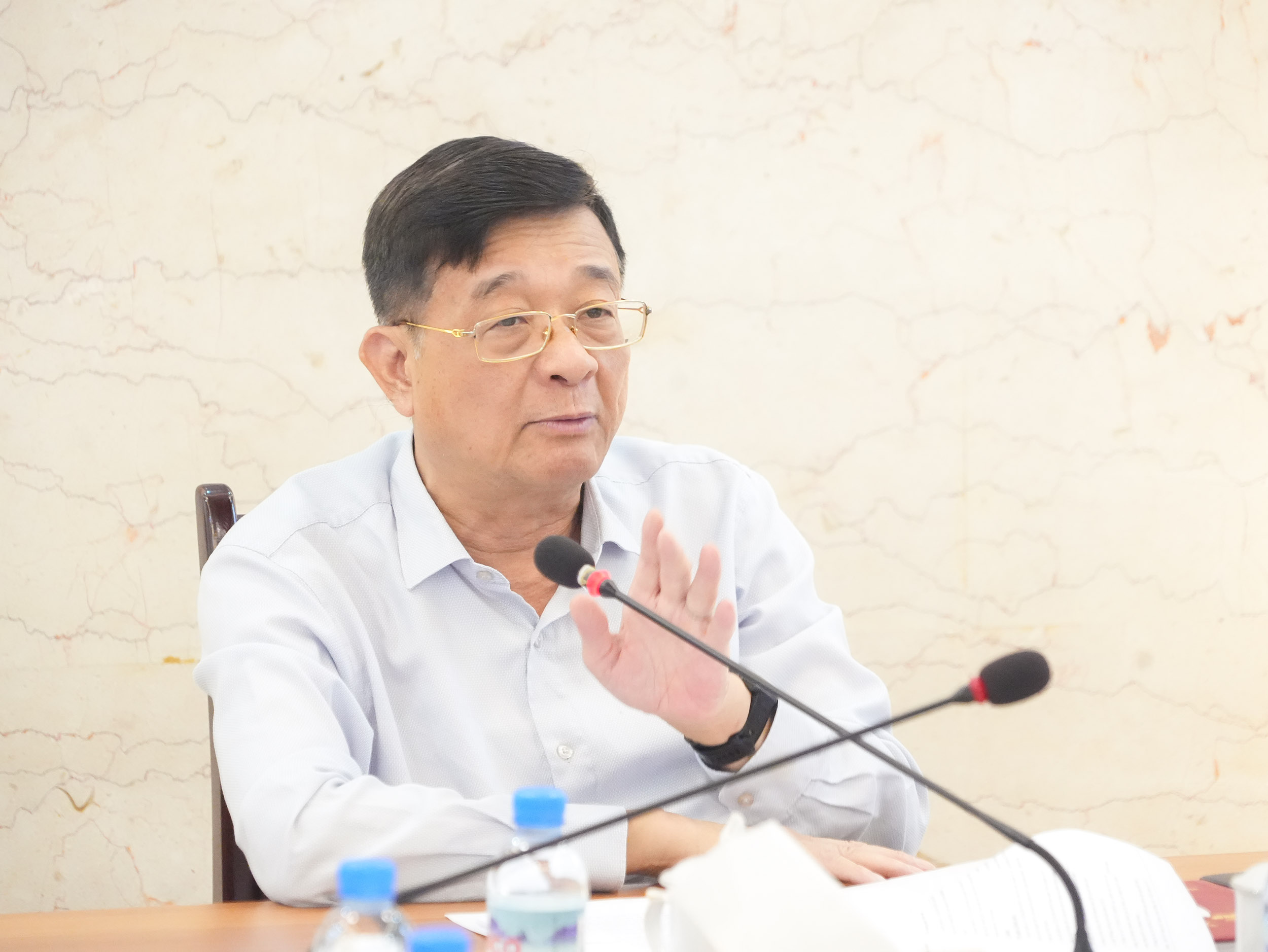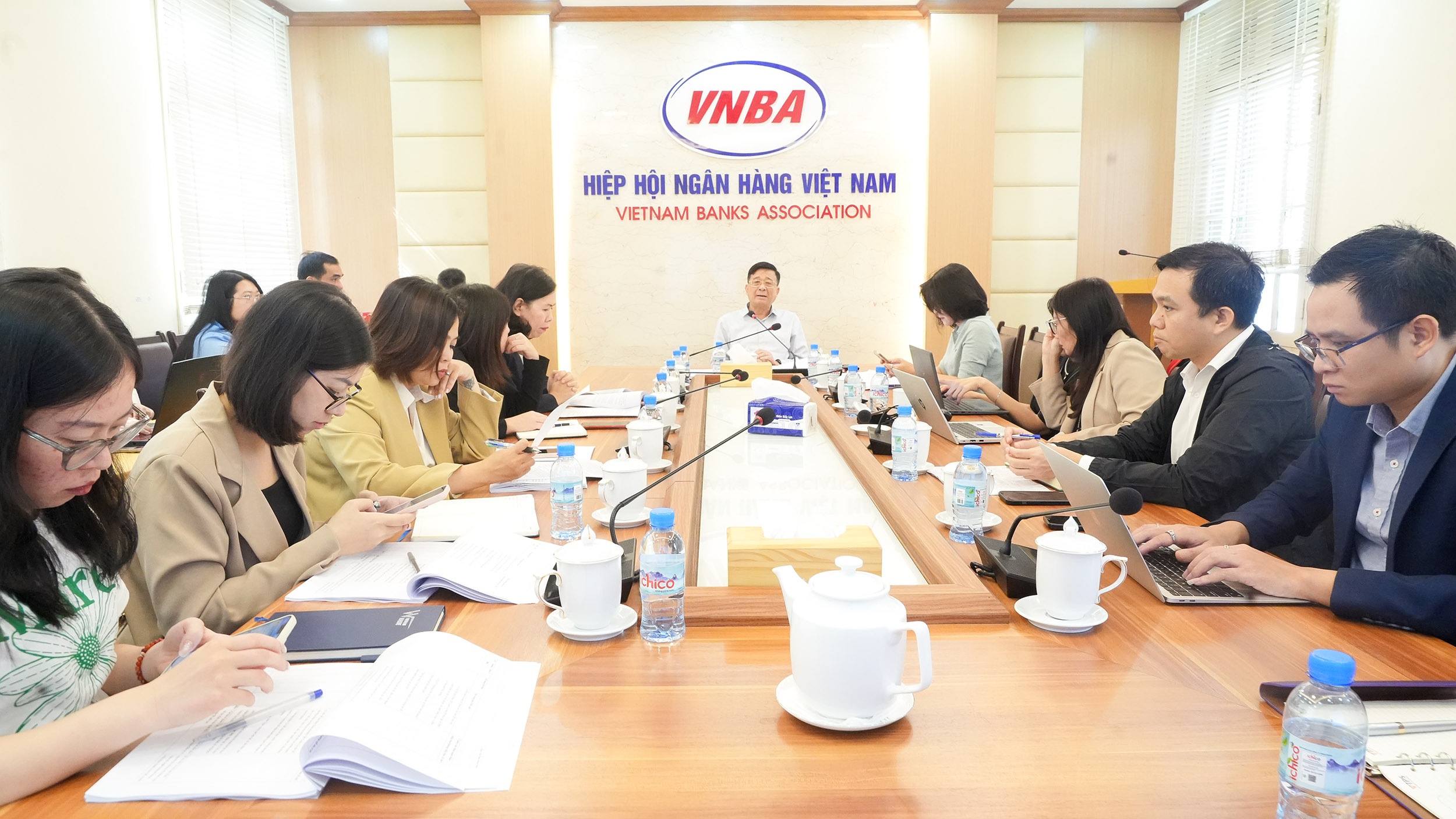The meeting was chaired by Dr. Nguyễn Quốc Hùng, Vice-Chairman and Secretary General of VNBA, who also serves as Head of the Handbook’s drafting committee. Representatives from the drafting committee and editorial team—drawing from a number of banks, finance firms and payment intermediaries—also participated.
In his opening remarks, Dr. Nguyễn Quốc Hùng emphasised that the objective of the Handbook is clear: continuing to refine the wording, define the scope of application, determine responsibilities and, particularly, achieve a high level of consensus among members regarding fee-sharing mechanisms.

Dr. Nguyễn Quốc Hùng, Vice-Chairman and Secretary General of VNBA
He noted that VNBA has engaged with various stakeholders including VNPAY, payment switching centres, Napas and other relevant units, to hear multi-faceted viewpoints. Although the Handbook is an operational guidance document, once the members reach consensus it must be treated as a common framework in order to ensure order in the QR payment ecosystem.
Among the priority issues are: developing a fair fee-sharing mechanism among parties in the payment ecosystem, and standardising the QR code format and technical processes to avoid fragmented standards and facilitate international interoperability.
During the meeting, Mr. Nguyễn Hùng Cường – Deputy Head of Research & Payment Technology Application at Napas – provided supplemental input on the draft Handbook. He reported that feedback from more than 25 entities (banks, finance companies, payment intermediaries) has already been incorporated, with notable contributions from institutions such as BIDV, ACB, SHB…
The banks’ group of comments concentrated on clarifying the responsibilities of banks in verifying the purpose of payments under foreign exchange regulations; adherence to limits under Circular No. 20/2022/TT-NHNN on one-way money transfers from Vietnam abroad and payments/transfers for other resident transactions; adding minimum information in QR codes to support reconciliation; reviewing the responsibilities of switching organisations; proposing expansion of legal bases and adding regulations for payment activity with many countries; and enhancements in anti-money laundering and transaction monitoring.
With regard to suggestions for distinguishing static QR, dynamic QR, bank-standard QR and intermediary-standard QR, Dr. Nguyễn Quốc Hùng stated that this is a major issue—equivalent in importance to the fee mechanism—and requires further study to develop a unified QR standard, thereby preventing Vietnam from having “each entity its own standard”.
Regarding comments on exchange rates and fee mechanisms, Dr. Hùng said that exchange rate issues will be reviewed comprehensively together with the fee mechanism, which is a key content and requires high consensus. He also requested a review of all bilateral legal bases, to add them into the draft. VNBA may coordinate with the Payment Department of the State Bank of Vietnam to reach further agreement.

In concluding the meeting, Dr. Nguyễn Quốc Hùng asked the drafting committee and editorial team to update all input, add international legal bases, standardise the duties of parties involved, and continue broad consultation. Afterwards, VNBA will organise a final round of feedback, submit to the State Bank of Vietnam and issue the Handbook once high consensus is achieved.
VNBA News
